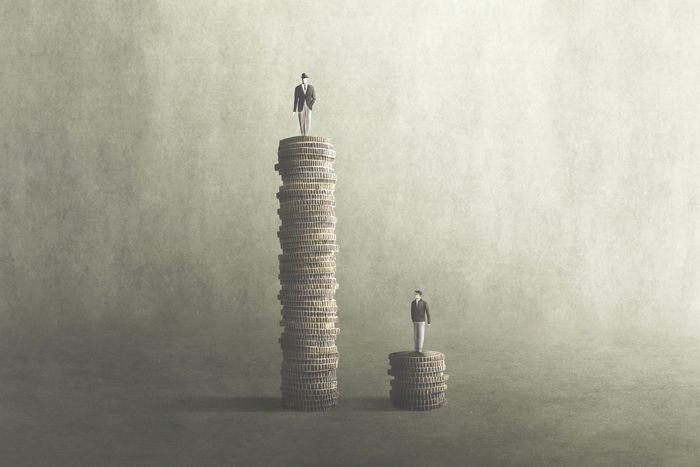When stories arise about the increase in wealth inequality in the U.S., student debt offers one explanation. The financial net worth of the young has declined remarkably in recent decades relative to older populations. More
Source: Eugene Steuerle



We have never really had a genuine universal basic income experiment in the US.
One of the most prominent experiments took place in Stockton, California, in February 2019. The program gave 125 of the city’s residents $500 per month. The results were seen as positive, with the control group experiencing 1.5 times more income volatility than those who received the funds. The share of participants with full-time employment rose from 28% at the start of the program to 40% a year later. Meanwhile, the control group only saw a 5% increase in full-time employment over the same period.

From 1940 to 2019, Americans’ life expectancy rose by almost 16 years, while the share of the U.S. population 65 and older grew from 9.8% to 16.7%. The elderly have progressively more healthy years to work. Most important, increased life spans have meant that older Americans’ wealth portfolios have been able to compound for longer.
Source: Richard McKenzie, Americans are Living Longer and Prospering, Wall Street Journal.

Proponents of reparations cite past housing discrimination as a primary driver of today’s racial wealth gap.
The Federal Housing Administration (FHA) was established in 1934 to provide federal insurance for home loans and it led to a huge increase in home ownership in the US. In determining which residences to insure, the agency instructed underwriters to consider, among other things, a community’s “economic stability” and its “protection from adverse influences.” This resulted in a practice known as “redlining.”
See Ta-Nehisi Coates, “The Case for Reparations.”
Yet, between 1940 and 1980, homeownership among blacks rose faster than it did among whites. (37% v. 34%)

National test scores plummeted for 13-year-olds, according to new data that shows the single largest drop in math in 50 years and no signs of academic recovery following the disruptions of the pandemic.
Source: Washington Post

Unlike the Official Poverty Measure, we include both cash and in-kind programs designed to fight poverty, including the market value of food stamps (now the Supplemental Nutrition Assistance Program, or SNAP), the school lunch program, housing assistance, and health insurance.
VALUATING THE SUCCESS OF PRESIDENT JOHNSON’S WAR ON POVERTY: REVISITING THE HISTORICAL RECORD USING AN ABSOLUTE FULL-INCOME POVERTY MEASURE by Richard V. Burkhauser, Kevin Corinth. James Elwell and Jeff Larrimore

In effect, Congress has decided to penalize marriage most at life stages when children benefit most from the commitment of more than one adult.
For young, low-income couples: Earn an additional $10,000, and it’s not uncommon to be left with half of that amount or less, even before counting the cost of items like commuting to work and childcare.
By contrast, when couples are past the normal child rearing age, Social Security is designed so that there are almost no marriage penalties and only marriage bonuses — in the range of $100,000 or more.

First, SNAP participants have very low employment rates, partly because SNAP disincentivizes work. Moreover, the share of SNAP adults who are capable of work has grown over time.
Second, compared to other groups of Americans not receiving SNAP—both high- and low-income—SNAP recipients exhibit much worse health outcomes. In 2018 (the most recent year of data), 65 percent of SNAP adults age 50-64 had been diagnosed with diet-related disease, and 42 percent were obese.
Angela Rachidi in testimony before the House Agriculture Committee, June 7, 2023.

On June 14, Bruce D. Meyer testified before the Senate Finance Committee on proposals to transform the child tax credit into a fully refundable child allowance.
Meyer first presented a summary of the historical evidence on tax and benefit changes for low-income Americans, showing that pro-work policies enacted in the 1990s (including the child tax credit) have reduced poverty dramatically, increased employment, raised living standards, and reversed a 30-year trend of rising single parenthood.

After World War II, mainstream economists offered a number of theories about what it would take to lift the underdeveloped world out of poverty. As an article in the Cato Journal showed, all these theories turned out to be wrong. Inequality among nations was greatly reduced over the last three decades as one billion people were lifted out of extreme poverty. That occurred because of greater respect for private property, opening up markets and participation in international trade. See Jane Shaw’s summary.